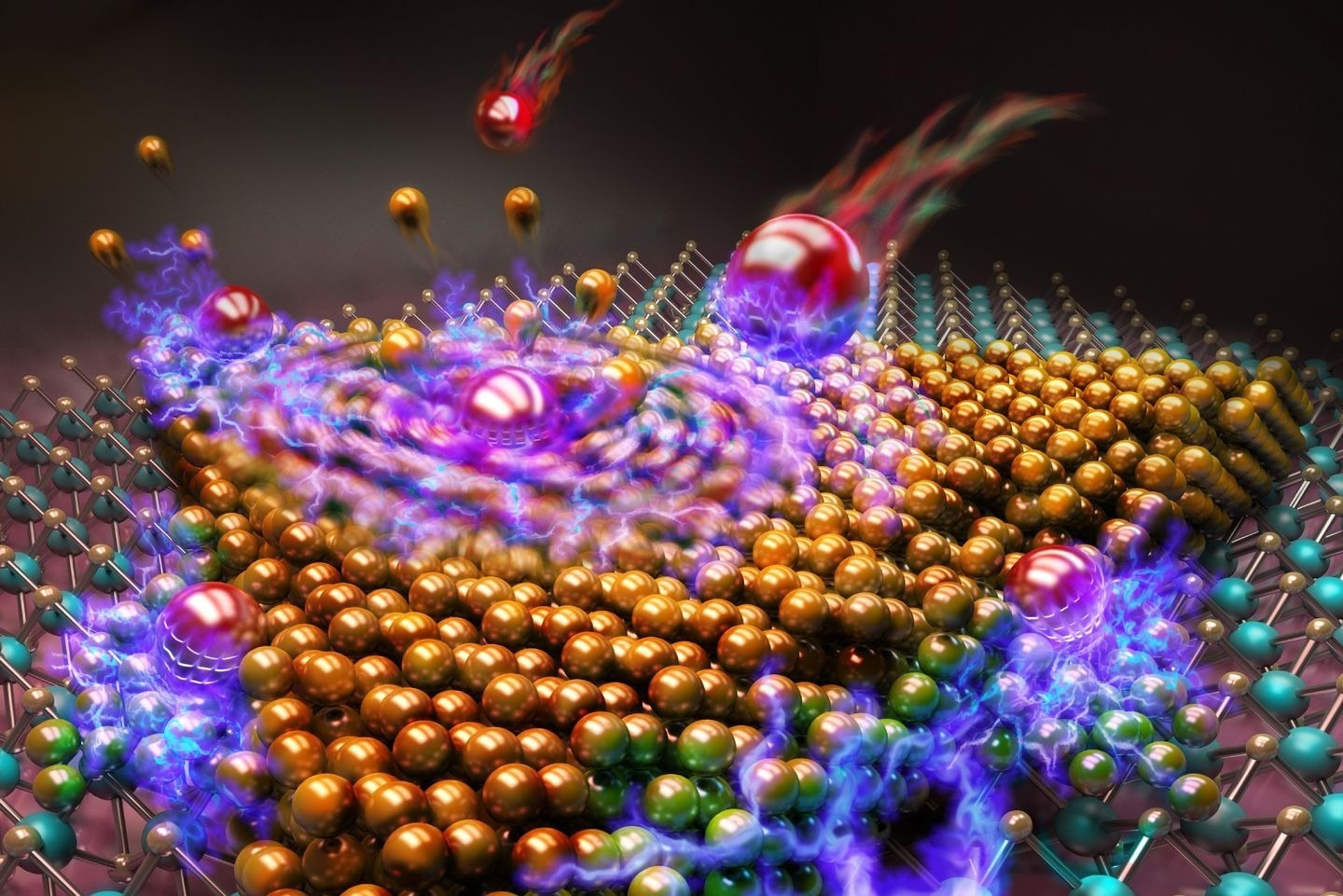Generally, two types of choices are made as far as physics is concerned. One is either dealing with the big things like a metal plate and its material properties or with small things like individual atoms.
 Highly charged ions hit tiny gold nuggets on an insulating surface. Image Credit: ucyborg.com/studio.
Highly charged ions hit tiny gold nuggets on an insulating surface. Image Credit: ucyborg.com/studio.
However, a world exists in between. In this world, both macroscopic and microscopic effects have a role to play.
The experiments performed at TU Wien (Vienna University of Technology) are situated in this complicated, in-between world. Here, extremely small pieces of gold comprised of a few thousand atoms with a nanoscale diameter are made to bombard highly charged ions.
In doing so, it is feasible to alter the shape and size of such gold pieces in a targeted way. The outcome indicates that the interactions between ion and gold are subtle.
Energy Transferred by Ion Bombardment
“We work with multiply-ionized xenon atoms. Up to 40 electrons are removed from these atoms, so they are highly electrically charged,” says Prof. Richard Wilhelm from the Institute of Applied Physics at TU Wien.
Later, such highly charged ions hit small gold islands positioned on an insulating substrate. When this occurs, a variety of outcomes can take place. For example, the gold islands might turn out to be flatter, they could melt, or they could even evaporate.
“Depending on how highly our ions are electrically charged, we can trigger different effects,” stated Gabriel Szabo, first author of the current study, who is currently working on his dissertation in Richard Wilhelm's team.
The highly charged ions strike the tiny gold nuggets at high speed, at nearly 500 km/second. However, the force behind the impact is not to blame for alternating these gold islands.
If you shoot uncharged xenon atoms at the gold islands with the same kinetic energy, the gold islands remain practically unchanged. So the decisive factor is not the kinetic energy, but the electrical charge of the ions. This charge also carries energy, and it is deposited exactly at the point of impact.
Gabriel Szabo, Study First Author, Vienna University of Technology
Changes in the Electronic Structure
Once the extremely powerful positively charged ions hit the nano-gold piece, they grab electrons away from the gold. In a large gold sample, this would have no considerable effect as gold is an outstanding conductor; the electrons move freely, and more electrons would be delivered from other areas of the gold nugget.
However, the nano-gold structures are really small that they can no more be seen as an inexhaustible reservoir of electrons. It is here that one penetrates the intermediate world between macroscopic metal and small atomic clusters and their nanoscale properties.
The charge energy of the impacting ion is transferred to the gold; thus the electronic structure of the entire nano-gold object is thrown completely out of balance, the atoms start to move and the crystal structure of the gold is destroyed. Depending on how much energy you deposit, it may even happen that the entire nano-gold piece melts or is vaporized.
Richard Wilhelm, Institute of Applied Physics, Vienna University of Technology
Further, the effects of the ion bombardment could be learned in an atomic force microscope: based on the charge of the ions, the height of the gold pieces is decreased to a lesser or greater extent.
Gabriel Szabo stated, “Just as our models had also predicted, we can control the impact of the ions on the gold - and not by the speed we give our projectiles, but rather by their charge.”
Enhanced control and deeper knowledge of such processes are significant for making an extensive range of nanostructures.
It's a technique that allows you to selectively edit the geometry of particularly small structures. That's just as interesting for the creation of microelectronic components as it is for so-called quantum dots - tiny structures that allow very specific tailor-made electronic or optical effects due to their quantum physical properties.
Richard Wilhelm, Institute of Applied Physics, Vienna University of Technology
Also, it is another perception of the world of small but not yet tiny things—into the multifaceted intermediate world between quantum physics and solid-state physics, which could only be realized by holding quantum and many-particle phenomena in mind concurrently.
Journal Reference:
Szabo, G. L., et al. (2023) Charge-State-Enhanced Ion Sputtering of Metallic Gold Nanoislands. Small. doi.org/10.1002/smll.202207263.